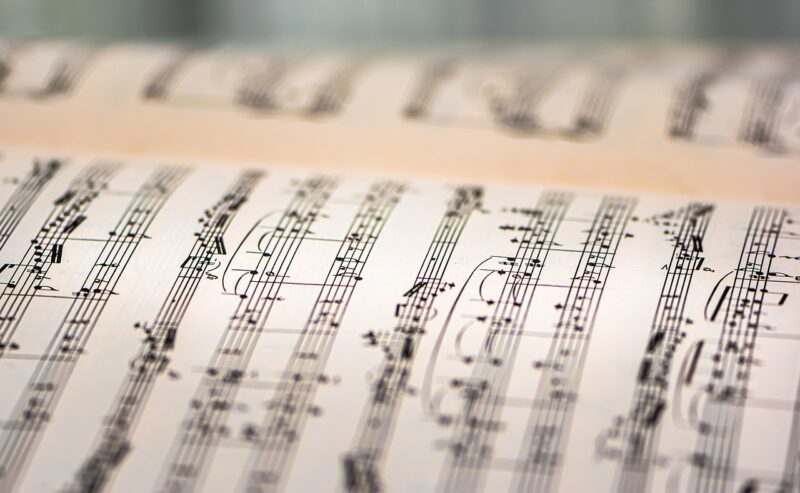
Reading music notes can seem like a daunting task for beginners, but it’s a skill that anyone can master with some practice and patience. In this guide, we will break down the essential elements of sheet music, from the basics of music notation to more advanced concepts. Whether you’re a budding musician or simply curious about how music is written, this article will provide you with the knowledge you need to read music confidently.
1. Understanding the Staff and Clefs
The foundation of sheet music is the staff—a set of five horizontal lines and four spaces that represent different pitches. Here’s what you need to know:
– The Staff: The five lines and four spaces on which notes are placed. Each line and space corresponds to a specific musical pitch.
– Treble Clef: Also known as the G clef, it is used for notes that are higher in pitch. The clef symbol curls around the second line, which represents the note G.
– Bass Clef: Known as the F clef, it is used for lower pitches. The two dots of the clef surround the fourth line, representing the note F.
Understanding which clef to use is crucial when reading notation. The clef dictates which pitches correspond to the lines and spaces.
2. Music Notes and Their Values
Notes are symbols that represent sounds, and each note has a specific duration:
– Whole Note (𝅗𝅥): Holds for four beats. Often represented as a hollow oval.
– Half Note (𝅗𝅧): Holds for two beats. A hollow oval with a stem.
– Quarter Note (𝅗𝅨): Holds for one beat. A filled oval with a stem.
– Eighth Note (𝅗𝅩): Holds for half a beat. A filled oval with a stem and a flag.
– Sixteenth Note (𝅗𝅪): Holds for a quarter of a beat. Similar to the eighth note, but with two flags.
Note values are essential for understanding the rhythm of a piece. The combination of different note values creates various rhythms and patterns in music.
3. Time Signatures: The Rhythm of Music
The time signature appears at the beginning of a piece of music and dictates how many beats are in each measure, and which note value counts as one beat. A time signature consists of two numbers:
– Top Number: Indicates how many beats are in a measure.
– Bottom Number: Indicates which note value (e.g., 2 is half note, 4 is quarter note, 8 is eighth note) represents one beat.
For example, a time signature of 4/4 means there are four beats in a measure, and the quarter note gets one beat. Understanding the time signature is crucial to keeping rhythm while playing.
4. Rests: Silence in Music
Just as notes represent sound, rests signify silence in music. Each rest has a specific duration:
– Whole Rest: Represents four beats of silence.
– Half Rest: Represents two beats of silence.
– Quarter Rest: Represents one beat of silence.
– Eighth Rest: Represents half a beat of silence.
– Sixteenth Rest: Represents a quarter of a beat of silence.
Incorporating rests is important for musical phrasing and dynamics, creating contrast between sound and silence.
5. Ledger Lines: Expanding the Range
Ledger lines are short lines added above or below the staff to accommodate notes that fall outside the regular range of the staff. For example, if you need to notate a high note that goes above the treble staff, you would use a ledger line to extend the range. This allows musicians to play higher and lower notes than what the staff shows.
Understanding how to read ledger lines is essential for playing a wide range of music, especially on instruments like the piano.
6. Articulations and Dynamics: Expressing Emotion
Articulations and dynamics are markings that convey how music should be played:
– Legato: Play the notes smoothly and connected.
– Staccato: Play the notes short and detached.
– Forte (f): Play loudly.
– Piano (p): Play softly.
These markings enrich the music and add character to the performance. Being able to interpret these symbols is key to conveying the emotion of a piece.
7. Practice Makes Perfect: Tips for Learning
To become proficient in reading music, consistent practice is essential. Here are some tips to help you in your learning journey:
– Start Slow: Begin with simple melodies and gradually progress to more complex pieces.
– Use Flashcards: Create flashcards with different notes and their corresponding names to reinforce memory.
– Play with Others: Collaborating with other musicians can enhance your performance skills and understanding of music.
– Online Resources: Utilize apps and websites specifically designed to help learners read music.
The key to mastering music notation is perseverance; regular practice will lead to improvement.
Conclusion
Learning how to read music notes is a rewarding endeavor that opens the door to musical expression. With a clear understanding of the staff, note values, time signatures, rests, and articulations, you can confidently read and play music. Keep practicing and exploring different pieces, and remember that every musician started as a beginner.
Embrace the journey of learning music, and soon, you’ll find that reading music becomes second nature. Your efforts will not only allow you to play notes on a page but also to express yourself passionately through melody and rhythm.







